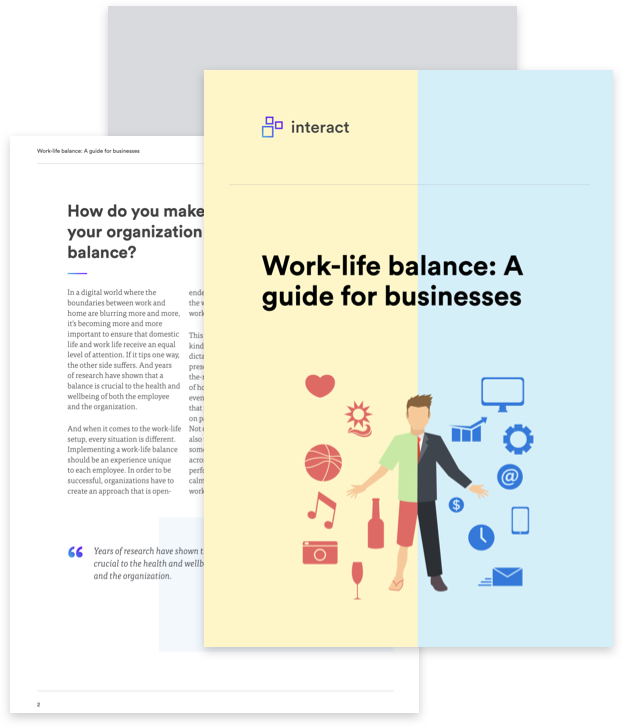Employee stress and the cost of poor communication

Thanks to Stress Awareness Week, we find that the topic of mental health has never been more prevalent. Impressive progress has been made surrounding the stigma of mental health as it moves up the national agenda. However, the impact of stress remains a concern, especially in the workplace.
We live in a stressful world. Some of the most frequent parts of our day to day lives have been categorized as stressors. Politics, money and other concerns all hit high percentages of stress for Americans. However, our concerns lie with the place where we spend most of our time — work stress weighs in at 61% according to the American Psychological Association.
Numerous surveys have been taken to identify the cause of these stressors. While several reasons have been named, individuals across the board agree that a majority of these issues are communication-related.
In fact, Dynamic Signal’s 2018 State of Employee Communication and Engagement Report discovered that 33% of workers have wanted to quit their jobs because they are so frustrated with poor communication that leaves them less informed, more confused about their jobs, and crammed with anxiety.
When you realize that a whopping 94% of people experience work-related stress, it makes you question, what are communicators doing wrong?
Cost of Poor Communication
Even as organizations explore new communication methods to increase productivity and improve the mental state, communicators are struggling.
Complaints accumulate over the debilitating impact of receiving poor communications, and for a good reason. Work stress affects both the organization and employees in huge ways. For an organization, productivity and success depends mainly on the well-being and mental health of its employees.
Without keeping a close eye on the stress levels on your employees, negative consequences are bound to occur, such as:
- Lowered productivity
- Increased turnover
- Decreased quality of work
- Unsatisfied customers
- A toxic work culture
61% of people reported that they did not think their employer did enough to prevent their stress levels getting too high. Show your employees that they matter by eliminating the issues impacting them negatively.
The first step to solving the problem of stress is taking a more in-depth look into why. Here are some ways your poor communications are costing you.
Overcommunication and confusion
In today’s digital world, there is an overabundance of communication tools available. Companies can pick and choose from these options or use them all. We find that in the case of many organizations, management adopts the “more the merrier” mind frame.
Although their efforts to create more communication opportunities are valiant, too many tools can be a curse for employees. The biggest complaint found is that being told to use multiple communication tools deals a blow to their productivity.
If you’re going to demand that your employees use these communication tools, then teach them how to. Direction is key. Without it, you and your employees can face some very negative consequences.
The time wasted looking for vital information can be a billion dollar problem for many companies. Having to make up that lost time would be stressful on anyone. Time is money and wasting it only increases the workload and, in turn, the stress your employees have to endure.
Overcommunication is most times unnecessary. Pick a platform and stick to it. If you absolutely must incorporate more than one communication tool, then be sure to direct your staff properly.
Lack of communication and suspicion
Lack of information creates a sense of distrust that should not exist inside a successful organization.
Rumors are a powerful thing, and when your employees are not privy to the inner workings of their organization, the gossip ensues. Unlike open and honest communications, this sharing of information is detrimental and spreads negativity throughout your organization.
Leaving your staff in the dark leads to feelings of resentment and unappreciation. As your employees begin to feel undervalued, they start to question their roles in the organization.
Why haven’t I received any feedback? Why are all the executives in town? Are they going to announce layoffs ? Am I next?
When security in their jobs is absent, your employees have a significant increase in their daily stress levels.
Under-communication leaves a gap that your employees will fill with their doubts and insecurities. The best way to defeat those feelings is to encourage an open flow of communication and a culture of recognition.
Manager relations and increased stress
Prosperous organizations place a lot of focus on building relationships between employees and their colleagues. But what about employees and management?
Your managers are your direct link to their organization and its goal. While your responsibility is to provide a high quality of work, their jobs are to make sure you have everything needed to do so. This includes a bright and healthy state of mind.
Staff members should be able to turn to management with their problems, especially when it concerns work stressors. However, that is rarely the case.
ISMA’s report on stress in the workplace found that 75% of people reported that they would not feel comfortable admitting to work-related stress to their line manager or HR department.
This fear and reluctance can be attributed to the negative stigma surrounding mental health. Many individuals feel that revealing weakness or inadequacies can place them in a negative light. Much more are concerned that their managers will turn on them, choosing to fire them rather than work with their requirements.
No one should fear being asked to leave if you admit work-related stressors to their manager. This is where training comes into play. Your managers need just as much training as your employees, maybe more. To hold the responsibility of another individuals roles in their hand, managers must understand how to both listen to the issue and appropriately alleviate the stressor.
Unhappiness and employee turnover
Stress has a basic formula when applied to your employees. Stressed employees are unhappy. Unhappy employees leave. Simple right?
Your employee retention relies on you keeping your employees happy and stress-free. Generating feelings of uncertainty and doubt with poor communications is opening the door so employees can walk out.
According to a Holmes report, the cost of poor communication has hit an overwhelming $37 billion. This report also found that companies with leaders who possess effective communication skills produced a 47 percent higher return to shareholders over a five-year period.
Take strides to make sure that your employees feel valued, satisfied and most of all heard. A workplace where employees feel valued enough to breed security and safe enough to communicate important information is ideal.
This attention to stress and employee mental health increases your chances of preventing any mental health troubles in the future.

